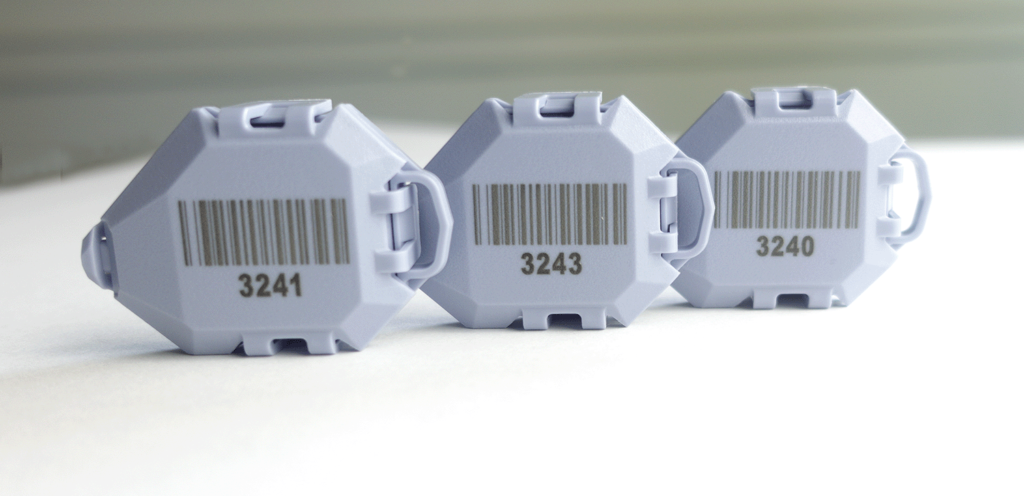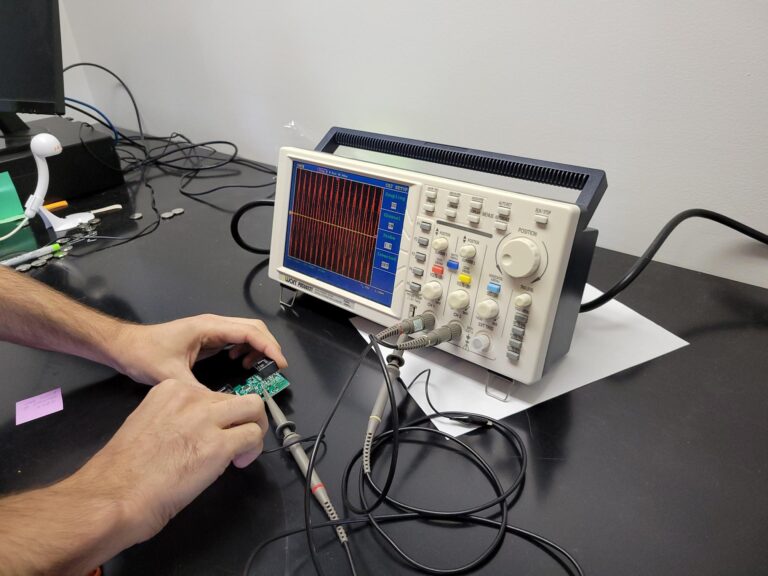
Losing items is a universal problem that can be particularly costly for businesses. Lost equipment and inventory directly translate to lost revenue. This is where asset tracking becomes essential. However, selecting the right asset tracking technology can be challenging.
This guide explores seven primary technologies used in asset tracking solutions, along with a few emerging options with untapped potential. Each technology’s benefits and shortcomings are discussed, providing a comprehensive overview. Additionally, you’ll find case studies and real-world examples of how companies are successfully leveraging these technologies today.
The technology categories are:
- Ultra-wideband (UWB)
- Bluetooth / BLE
- WiFi
- RFID
- Barcodes
- Cellular
- GNNS (GPS)
- Less common asset tracking technologies
Related reading: Everything You Need to Know About Real-Time Location Systems (RTLS) in 2024.
Which Asset Tracking Technology Should You Use?
Choosing the right asset tracking technology depends on your end-use. That said, there are a few general parameters that can help you make a smart decision:
- Your desired granularity / accuracy of location data
- Update rates of the tracking technology
- The number of assets being tracked
- The value of assets being tracked and the cost of asset loss
- The physical environment(s) in which you’ll be tracking
- The global / locational area in which you need to track
- Ease of use, including installation and setup
- Costs to purchase and maintain the asset tracking system
- Data transfer rates required
Most of these elements vary within the same technologies, but here’s a brief breakdown of some of the most common parameters end-users consider.

1. Asset Tracking with Ultra-wideband (UWB)
Ultra-Wideband (UWB) is emerging as a leading technology in asset tracking and real-time location systems (RTLS). It often surpasses other technologies in terms of accuracy, scalability, security, and cost-effectiveness. This is why WISER incorporates UWB into its Locator solution.
UWB solutions utilize advanced techniques such as Angle of Arrival (AoA), Time of Flight (ToF), and Time-Distance-of-Arrival (TDoA) to accurately register locations in real time. Some solutions even employ their own proprietary measurement methods, enhancing their precision and reliability.

Ultra-Wideband (UWB) refers to a technique for transmitting data across a broad section of the radio spectrum. It achieves this by emitting short pulses with low power output over a significant bandwidth. Essentially, UWB is an efficient, low-power method for sending a substantial amount of data.
Advantages
- Data transmission through many walls and obstacles
- Non-interference with most other RF devices
- Unique radio signatures and improved ability to avoid multipath propagation
- Low power
- Enables high location accuracy—often within inches
These benefits make UWB ideal for locating and tracking in heavy industry and GPS-occluded environments. It’s also ideal for high-value assets or situations where inaccuracy poses considerable risks—such as safety, security, and healthcare applications.
UWB’s ability to penetrate obstacles gives it quite a bit of flexibility, including operability without a line-of-sight between devices. This is key for environments such as hospitals, which have few open areas. It’s also particularly well-suited to operate around metal and other reflective surfaces since its unique radio signature is a natural deterrent to multipath propagation.
Power efficiency is a key advantage for UWB. For tracking solutions like WISER’s, this makes it possible to operate tracking devices for years at a time without recharging or replacing batteries. Security is a strong point for UWB as well. UWB transmissions are traditionally hard to detect and intercept. Combining low power emissions with UWB’s low transmission range makes it difficult to find a UWB signal nearby, let alone to compromise it.
Disadvantages
The biggest disadvantage for UWB is probably infrastructural. For instance, GPS is essentially ubiquitous for outdoor location, and WiFi networks are easy to access across much of the populated globe. UWB, on the other hand, often relies on deploying new, unique hardware across a given tracking area.
Another possible disadvantage is that many UWB applications rely on precise time-syncing between devices. This can complicate the installation process, which is often a large cost for asset tracking technologies. It’s not uncommon for UWB solutions to require laser measurements between stationary devices, and this gets cumbersome and pricey in a hurry.
Fortunately, this obstacle isn’t insurmountable. Solutions like WISER’s ATLAS and Locator feature a wireless auto-calibration process. This means that end-users don’t have to measure with a ruler, let alone a laser. This makes the installation process quick, efficient, and inexpensive. In addition WISER devices do not need line-of-sight like other UWB RTLS solutions.
Case Study: Work-in-Progress Tracking with WISER.
2. Bluetooth / BLE for Asset Tracking
Bluetooth is one of the most common technologies used for indoor positioning applications like asset tracking. Bluetooth Low Energy (BLE) has been available for almost a decade, and its low power consumption gives it a nice edge over other older solutions like WiFi and GPS.
BLE systems usually establish their own wireless networks with a combination of Beacon and Hub devices. Many BLE solutions can incorporate existing devices such as smartphones. This can simplify the implementation, especially for applications using mobile devices.
Advantages
- Low power consumption
- Relatively inexpensive devices
- Potential for cross-functionality with common consumer devices
- Accurate up to a few meters
The ability to use mobile devices as roaming hubs makes BLE a particularly common technology for consumer applications. It’s also a common tracking solution for indoor environments like shopping malls and hospitals.
Like UWB, BLE systems typically don’t require any manual scanning or searching. Using Received Signal Strength Indications (RSSI), BLE can determine proximal asset locations more or less as objects move. Newer developments in BLE can also enable localization via direction finding methods.
Disadvantages
- Latency
- Risk of wireless interference
- Requires a high density of transmitters
- Inaccuracy in reflective or highly active environments like factories or refineries
- Security vulnerabilities
Latency is one of the big disadvantages of BLE. There’s a decent chance of signal interference, since so many devices already compete for space in the same part of the radio spectrum as BLE. This may result in lost coverage, dropped datapoints, and reduced speed.
Beacon systems such as BLE employs often require a high number of networked devices. These devices can be affordable, but when higher amounts of devices are needed, it can be prohibitively costly even before installation and maintenance fees.
BLE devices face operational limits in some environments. BLE solutions don’t function particularly well around metal or reflective surfaces, for example. Some systems come with workarounds for this, such as additional WiFi-connected devices, but this can cause other problems like added network latency and interference, both which limit scalability. Active environments with many moving parts are also a challenge for technologies like BLE, because RSSI methods can be thrown off by temporary obstacles moving in and out of the setting.
Finally, Bluetooth solutions generally face numerous security risks. One of the biggest security obstacles is the wide adoption of Bluetooth technologies, making everything from phones and keys to headphones and keyboards susceptible to attacks using similar protocols.
3. WiFi Location and Asset Tracking
Maybe you’ve noticed, but WiFi’s fairly commonplace. It’s also more standardized than most technologies used for asset tracking, making implementation easier.
Like BLE, WiFi primarily uses RSSI techniques to locate and track assets. This includes using historical RSSI in a method called fingerprinting. As with BLE and UWB, some WiFi solutions also use AoA and ToF measurements, though these usually require more complex setup and calibration beforehand.
Advantages
- High data throughput
- Large wireless range
- Potential to work with many different WiFi-enabled devices
- Operability with existing WiFi networks lowering installation costs
- WiFi standardization simplifies development and interoperability
Businesses and individuals already use WiFi to transmit data of every conceivable kind. This means that WiFi tracking solutions often need fewer bridging mechanisms for the data.
Like BLE and UWB, WiFi is better suited for localized tracking than global. WiFi’s near omnipresence in business settings is especially advantageous for small-scale projects with only a few key assets, since it could mean that end-users don’t need additional network infrastructure to begin tracking.
Disadvantages
- Lack of scalability
- Inaccuracy
- High power consumption
- Congestion of existing WiFi networks
- Security risks
Inaccuracy and unreliability are common issues in wireless tech using RSSI—like BLE and WiFi. It’s possible to get positioning within a few meters, but moving objects and other obstacles often throw precision off significantly. This limits WiFi’s use in asset tracking. It’s also part of why WiFi solutions are difficult to scale.
Another scalability challenge is the limit to WiFi spectrum space and access points. In this sense, WiFi’s ubiquity is often a two-edged sword.
This gets even more problematic if asset tracking solutions operate on the same wireless networks as internal communications or other key operations. First of all, network congestion is common enough without trying to add dozens or hundreds of real-time location reports. Secondly, most current WiFi deployments won’t have ideal positioning to support an RTLS or asset tracking application.
Finally, WiFi has been around long enough to expose it to countless security risks. This fortunately means that more companies work specifically in the WiFi security space, but if you want to find examples of cybersecurity gone wrong, look no farther than WiFi.
4. RFID
Radio-frequency identification (RFID) has been around for several decades, proving its value in numerous use cases and industries. Despite its age, RFID continues to find traction and relevance across many sectors today.
It’s important to note that various technologies can be classified as RFID solutions since they involve some form of radio identification. However, in this context, we refer to RFID as the older set of technologies, such as ISM band RFID devices.
RFID systems primarily function through a combination of electromagnetic readers and tags. Tags contain data that can be read by both stationary and handheld RFID readers. These readers, often called interrogators, detect the presence of tags. While primarily identifying the tags being scanned, readers can also provide additional data. For instance, a fixed-location reader, like a doorway scanner, can log the specific time an RFID tag crosses the threshold, recording its location at that moment. Both stationary and handheld scanners are useful for inventory processes, security checks, and similar tasks.
RFID includes both passive and active systems, utilizing various communication techniques between devices. Passive RFID tags, which do not have internal power sources, rely on the power emitted by the reader to relay a signal back. This makes passive RFID tags inexpensive and long-lasting, though they have limited range. Active RFID systems, on the other hand, have a power source connected to each tag, extending the range up to thousands of feet but at an additional cost per device. There is also an intermediate option: a battery-powered transponder that signals only when interrogated by a reader.
The primary goal of an RFID system is to determine which tags are within the range of which readers, often boiling down to a binary question: is the tag detectable or not? The range largely depends on the type of reader used and the techniques employed to interrogate the tag.
Advantages
- Very small and unobtrusive tags—especially passive ones
- Long device life
- Low cost for tags
- Small radio signature
A particular advantage of RFID systems is its ability to tag many kinds of assets. RFID tags can identify large objects like vehicles and heavy machinery, but they can also fit on or even be embedded inside hand tools. The low cost of passive RFID tags makes it feasible to track a high quantity of objects as well.
Disadvantages
- Variability of precision
- High cost of readers
- Complex system installations, often requiring manual scans
- Wireless signals are often easy to intercept
- No true locational data
- Battery hassles with large deployments of active tags
RFID tag-reading systems, while valuable, come with certain limitations. They can be cumbersome due to the need for manual scans and often imprecise in their data accuracy. Typically, RFID can indicate whether an asset is present, but defining “present” can be problematic. For instance, a high-range active RFID tag could be anywhere within 5-9 million square feet of the reader’s range. Additionally, missed scans during object movement can result in inaccurate asset tracking, potentially leading to irretrievably lost items.
The most robust RFID solutions often involve strategically placing multiple readers or positioning low-range readers at choke points, such as doorways. While effective, these methods can be costly to install and adjust, given the high expense of the readers themselves. Other approaches, like using roaming readers to increase location precision, add complexity and may require recurring manual labor.
Despite these efforts, end-users typically only know if the RFID tag is near the reader or where it was last successfully scanned. This level of information might suffice for many inventory systems, but it doesn’t provide real-time location tracking and won’t help find a lost asset immediately.
In summary, RFID offers a wide array of asset tracking options, providing flexibility and reliability in various applications. However, for businesses requiring precise and immediate asset tracking, these limitations highlight the need for more advanced solutions beyond traditional RFID systems.
Case Study: Tool-tracking with passive RFID and UWB.
5. Barcodes
Note: The main principles applying to barcodes also apply to QR codes.
Barcodes share several benefits and shortcomings with RFID. Given their widespread use in retail and other industries, barcode systems have a big advantage when it comes to technology recognition.
Like RFID, barcodes encode a unique ID. The chief difference here is that barcodes themselves are even more affordable and don’t employ power at all. While RFID most often uses doorway readers, barcode scanners typically require a human operator. The downside is that barcodes need to be scanned more or less individually. On top of that, the typical scanning range is only a few inches, meaning you need to be very close to successfully make that scan.
Advantages
- Very inexpensive
- Extremely small and lightweight
- Can be used to account for massive numbers of assets with no theoretical limit on quantity
- Barcode scanners are typically much more affordable than RFID scanners
Disadvantages
- Requires labor-intensive manual scanning and searching
- Scanning requires line-of-sight and often very short range
- Dependent on data from last point-of-scan
- Prone to human error like missed and erroneous scans
- Often requires expensive software components for inventory management
Barcodes don’t show location, let alone real-time status. What they do show is identification at the last recorded scan. This means scanning needs to be recorded with some form of location data to actually know where assets are.
As with RFID, barcode scanning may need to utilize narrow choke points at key junctures. These can be clunky, difficult to maintain, and expensive to install. Choke-point or portal scanning also limits the speed with which you can scan assets and can potentially cause backlogs in other processes as well.
Limited as barcodes are, they have more than shown their value in the 70 years since their invention. For applications with massive numbers of low-value assets, it’s hard to find a more feasible system.
6. Cellular Tracking
Cellular asset tracking can determine the state, city, or even neighborhood of an object from many miles away. It doesn’t get very precise, though. Because of this, Cellular asset tracking is typically used for larger assets that aren’t hard to find. Think 18-wheelers and buses rather than forklifts and boxes.
Advantages
- Long range
- Near global reach
The clearest advantage of Cellular asset tracking is that it’s often usable from the point of origin all the way to the point of delivery without tapping into additional technologies.
Disadvantages
- Very high power consumption
- Slower update rates—typically in order to conserve power
- Risk of dead spots in obscure signal areas
- End-users rely on a third party for coverage and can’t repair the system in cases of lost coverage
- Limited use in indoor or underground locations
- Low tracking accuracy
While Cellular works well in a variety of global logistics applications, it has its limitations. Power consumption is high on the list. Just as cellphones typically require a daily recharge, most Cellular asset tracking solutions need to recharge or replace batteries after just a few trips. This contrasts with the years-long or decades-long lifespans of some more localized asset tracking devices.
Inaccuracy is another top limitation with Cellular. It primarily works by trilateration of signals from cell towers, so the math is dealing with big numbers and big error margins in even the best cases. Tracking accuracy usually peaks at 30 meters or so and can be much less in other cases.
In the end, Cellular is simultaneously one of the least flexible but most powerful methods of asset tracking.
Case Study: Asset tracking across oil drilling sites.
7. GNSS (GPS) Location and Tracking
Despite what you might see in spy movies, global navigational satellite systems (GNSS) are not a magic bullet for real-time location. Examples like the United States’ GPS are, however, some of the most widely-used tracking technologies in the world today.
GPS depends on knowing the locations of in-orbit satellites and synchronizing their clocks precisely. From these known, synchronous points, it can facilitate “absolute location” and relative movement tracking, among other things.
Advantages
- Global visibility for tracked assets
- Wide availability of GPS signals
- Large library of GPS tracking applications
- GPS antenna integration into many professional and consumer devices
Like WiFi and barcodes, one of GPS’s biggest advantages is simply that people recognize it. They might complain about it, but that’s usually evidence that they’ve used GPS—even that they rely on it. And, for the most part, people trust its reliability. Additionally, many organizations work hard to make it even more reliable.
Disadvantages
- Requires line-of-sight with satellites
- End-users cannot repair or adjust the space or control segments
- High power consumption
- Low accuracy in most cases
The primary drawback of GPS asset tracking is its reliance on a clear line-of-sight with multiple satellites. This dependency makes GPS unreliable in metropolitan areas, behind mountains, and especially underground. Additionally, GPS signals are often unstable or unusable inside most buildings.
Unlike localized asset tracking technologies, GPS relies on infrastructure that end-users cannot fix if something goes wrong. The GPS system consists of three segments: the space segment (24 satellites), the control segment (ground stations and antennas), and the user segment (smartphones, wearables, and other GPS receivers). End-users can only address issues with the user segment. While the U.S. Air Force maintains the space and control segments to prevent issues, end-users have no control if problems arise in these areas.
Accuracy is another limitation, with GPS generally providing precision within 5-10 meters. Achieving higher accuracy requires a complex and expensive differential GPS system. Although car navigation apps may appear more precise due to front-end adjustments of the actual data, this can sometimes result in inaccuracies, such as displaying your location on a parallel road. While this level of accuracy is usually sufficient for tracking vehicles and other large assets, it may not be suitable for smaller assets.
Given these challenges, businesses must consider the limitations of GPS asset tracking and evaluate whether it meets their specific needs, particularly for smaller or indoor assets.
Case Study: Tracking train locations in New Zealand.
8. Less common asset tracking technologies
LoRa
LoRa (long range) is gaining traction today as one of the newer approaches to asset tracking. With a signaling range of several miles, minimal power requirements, and a high potential for scalability, it looks like a promising solution for some use cases. One of the big hurdles is that LoRa solutions for asset tracking are fairly inaccurate. LoRa location precision typically caps out within a 50-meter radius of true location, making actual location difficult for any but the largest assets. LoRa is also very limited in terms of data transfer rates.
ZigBee
Zigbee once looked like a major opportunity for secure, non-interfering RTLS and asset tracking. Several companies have used ZigBee devices for projects like home automation, where devices stay fairly close to one another. ZigBee can also be useful for numerous applications with low rates of data transfer. However, nearly every provider of ZigBee RTLS has discontinued these systems in favor of other technologies—likely because of data transfer limitations inherent in ZigBee networks, low transmission range, or the interoperability issues that have plagued ZigBee solutions in past years.
Ultrasonic
In many ways ultrasonic is still a new field of study. You could also say this is a much older approach to location. After all, creatures like dolphins and bats use ultrasonic means like echolocation with very high precision. Potential pitfalls include dependence on precisely-placed ultrasonic receivers and ultrasound’s susceptibility to being obstructed by physical barriers.
Radar
Like other technologies vetted by military groups, Radar has proved useful in many non-military settings. Radar systems specifically offer value in motion detection and proximity sensing. If paired with known layouts, these could hypothetically be used to track personnel moving through the layout. Few of these systems, however, are equipped to identify actual people or objects in motion. These types of detection system also tend to need line-of-sight at short ranges. Large-size antennas or densely packed antenna arrays may be required for precision, adding costs and limiting flexibility.
Infrared systems also require line-of-sight and only provide image information. This precludes many uses in location detection or asset tracking. The big problem is that IR systems focus on presence-detection, hampering their usefulness in large or complex environments or actual asset tracking applications.
Computer Vision
At a high level, computer vision refers to the ways in which computers make sense of images. This can include facial or object recognition, motion estimation, and other methods for analyzing video or still images. This requires cameras—potentially a lot of them—and a line-of-sight. Computer vision solutions might also have their own lighting requirements, further adding to setup complexity and overall cost. It also depends on a large amount of processing power and high data throughput compared to other asset tracking systems. The benefits of computer vision are that it can be very precise within controlled parameters and can use inexpensive tags like QR codes. Computer vision systems such as facial recognition can also handle limited object identification without any physical tagging.
LiDAR
LiDAR refers to light detection and ranging. It primarily measures distances for mapping purposes. LiDAR has limited potential as an asset tracking technology since it does not generate relative location data—only distances.
Integrating Asset Tracking Technologies: Finding the Right Fit
Few, if any, of these asset tracking technologies are mutually exclusive. With a bit of creativity, you can mix, match, and combine them in numerous ways. For instance, WISER’s solution integrates UWB with barcodes to enhance tracking capabilities.
It’s crucial to ensure that the asset tracking technology aligns with your specific use case. For example, tracking items in a grocery store probably doesn’t require GPS, whereas locating $100K worth of copper on a factory floor might need more than just a barcode.
If you’re unsure which asset tracking technologies to use, let the specific end-use guide your decision. This approach will help you select the most effective and efficient solution for your needs.
(original post by Stephen Taylor, updated by Cris Masselle)



